Thuja western "Columna": features and cultivation

Conifers are popular with landscape designers because they remain green all year round. Thuja is one of the varieties of plants with which it is easy to create a hedge on the site.
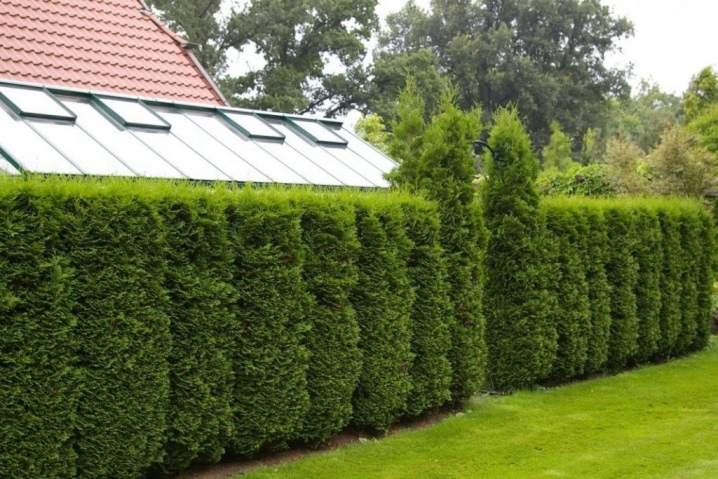
Description
Thuja western "Columna" belongs to the cypress family. It is characterized by rapid growth and a special crown shape. As the thuja grows, it acquires a columnar shape, the branches are located tightly to each other, therefore, the hedge turns out to be dense. The high growth rate and other advantages made this variety popular in landscape design. The needles have a bright green tint, in winter they change to brown, but in summer they please with a unique glossy shine. The needles are collected in a dense carpet on branches small in length, therefore, the crown diameter is small.

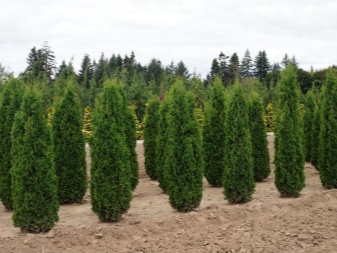
There is a reddish-brown bark on the trunk, it is not smooth, but rather rough. On the plant, you can see small fruits in the form of cones, with the onset of autumn they also change color to brown. The root system is a tangle of thin shoots. From the outside, they are very similar to the mycelium in mushrooms.
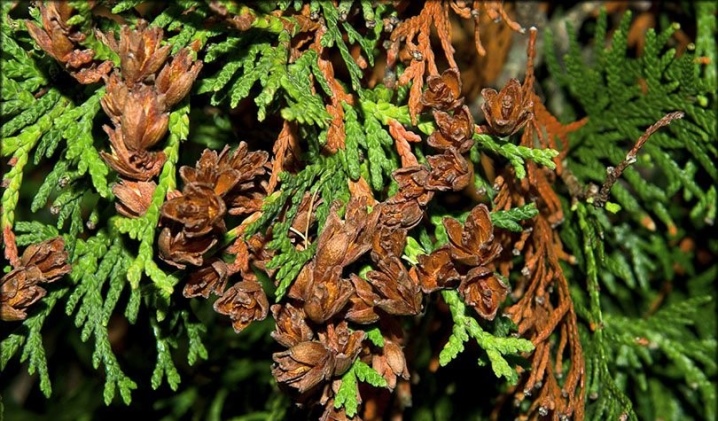
For a plant to thrive and grow healthy, the grower is required to plant it properly and provide follow-up care.
You can plant a columnar thuja as a continuous strip, or as single plants, it always looks great. Frosts and severe winters do not harm the thuja, but in the first two years, while the tree is still quite young, it is advised to cover it for the winter. In spring, it can be sensitive to direct sunlight, so it is better to shade the plant. Even the first sun leaves little burns. In summer and hot spring, it is important to water the thuja on time, if there is not enough moisture, the branches will begin to dry. After planting and then nitroammophoska serves as an excellent fertilizer. Thuja has a unique resistance to harmful substances in the air, so it can be boldly landscaped with greenery in industrial zones, the area near highways.
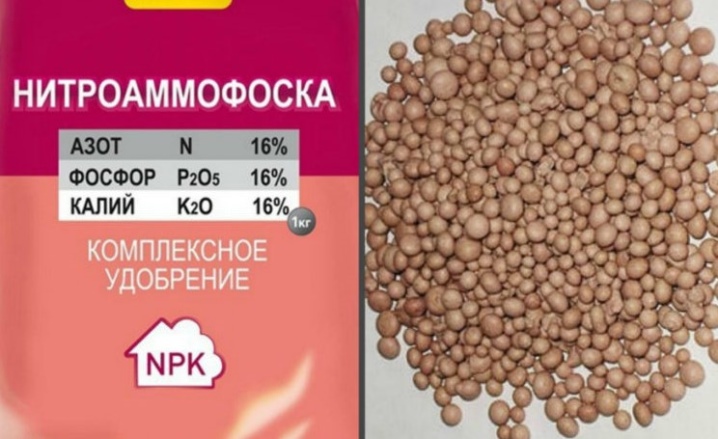
In height, the columnar thuja can reach 9 meters, with quality care, sometimes even 10 m. This long-liver will delight not a single generation, since it retains its attractive appearance for 200 years. Each year, the tree adds in growth from 15 to 30 centimeters. By the end of the first decade, its height is on average 3 meters. The crown diameter is up to 1.5 meters. It is being formed quite actively, increasing in width by 7 centimeters per year.
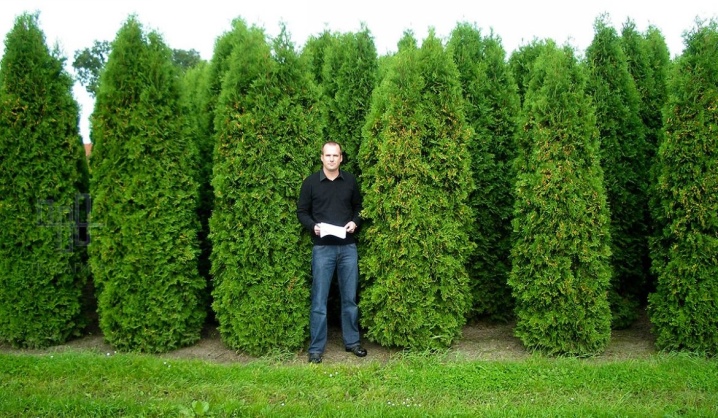
Western thuja is represented by several varieties. Among them, landscape designers select a suitable plant, taking into account the diameter of the crown, the height of the tree and the shade of the foliage. Not all are suitable for creating an attractive and tall hedge. Thuja "Kolomna" has the highest growth rate, while it is not at all necessary to trim it every year, because even without thinning the crown it looks gorgeous. The correct shape does not need correction.
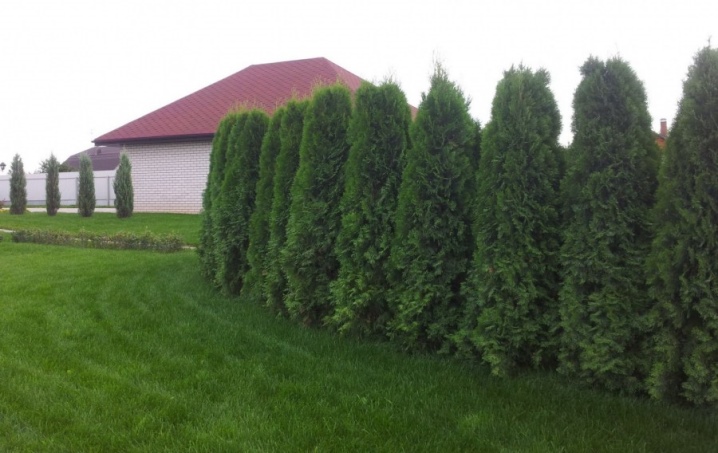
How to plant?
If you plant the thuja correctly, then in the future it will delight with its attractive appearance. An open, sunny area or an area with little shade is best. Planting in the shade, where there is practically no sun and it is very dry, will lead to the fact that the plant will eventually wither, turn yellow and die. When choosing a suitable place for Columna, it is worth choosing something that is protected from the wind.
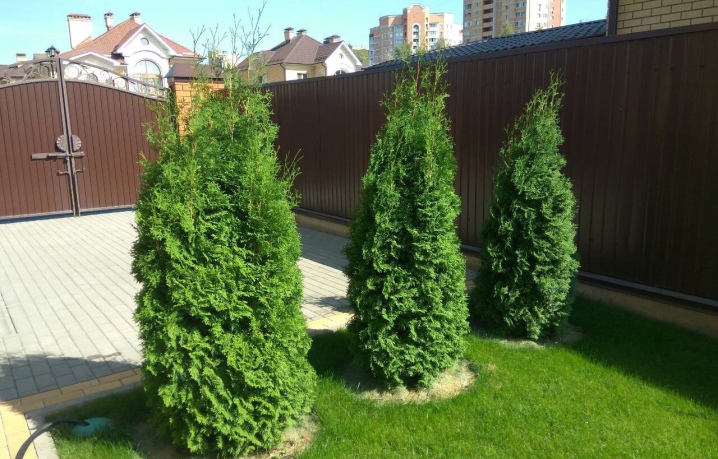
In practice, it turns out that with strong gusts, the tree can break, especially if it is quite tall.
The type of soil in which the thuja will grow does not play a big role. If possible, only then experienced gardeners are advised to use fertile soil with a weakly acidic or alkaline composition. But breathability will need to be paid more attention. When planting in clay or sub-clay soil, high-quality drainage is required, which is formed at a distance of 20 centimeters into the soil. Groundwater should not be retained, otherwise it will cause rotting of the root system.
Experienced gardeners are advised to adhere to several rules when planting thuja on the site.
- The site requires preliminary preparation. It is first dug up, then a planting hole is prepared, the dimensions of which depend on the volume of the tree crown. The pit width should be twice this parameter.
- It is worth preparing the soil inside the groove. It is mixed from several components. Take two parts of sod soil, one part of sand, peat. Be sure to add 500 grams of mineral components so that the thuja takes root better.
- The depth of the pit, taking into account the additional soil poured into the bottom, should allow the root system to be immersed to the root collar. Everything is well tamped and watered.
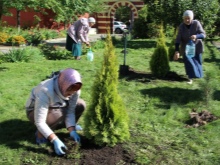

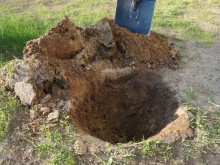
Important! If the plant is planted in one place for many years, it is worth considering its future dimensions in height and width. There should be no obstacles at a distance of 1.5 meters. Other crops are advised to plant at least 3 meters.
Care rules
Columna does not require careful maintenance. The variety is picky, but loves to be cared for. The plant will look attractive if it is watered on time, fed, treated against pests and diseases. After planting, the seedlings are watered every week so that their root system grows better. A bucket of water is enough for one thuja, but if it is hot and dry, then the amount of liquid should be doubled. If you want to achieve maximum efficiency, then you need to use sprinkling. This method of watering ensures maximum replenishment of moisture, which evaporates quickly through numerous needles. Sprinkling helps wash away dirt that settles on foliage in the form of dust.
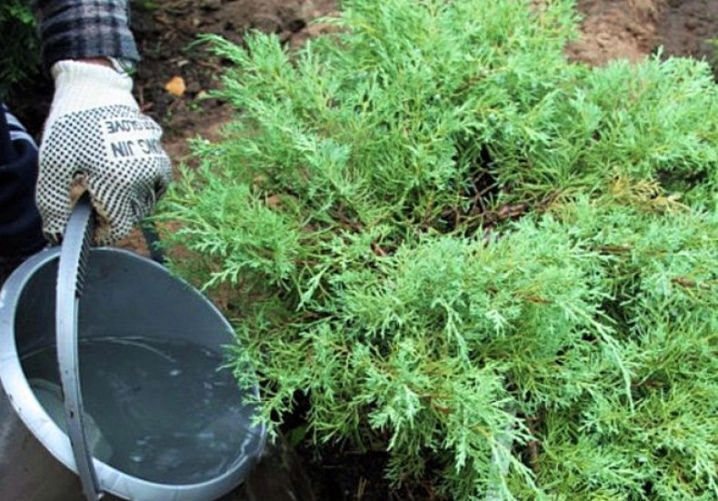
After watering, it is useful to loosen the soil around the plant. It is necessary to process the soil carefully, as the root system can be easily damaged. The immersion depth is up to 9 centimeters. Moisture will last longer if a layer of mulch is applied. Small chips are ideal for thuja, as they perfectly retain moisture.
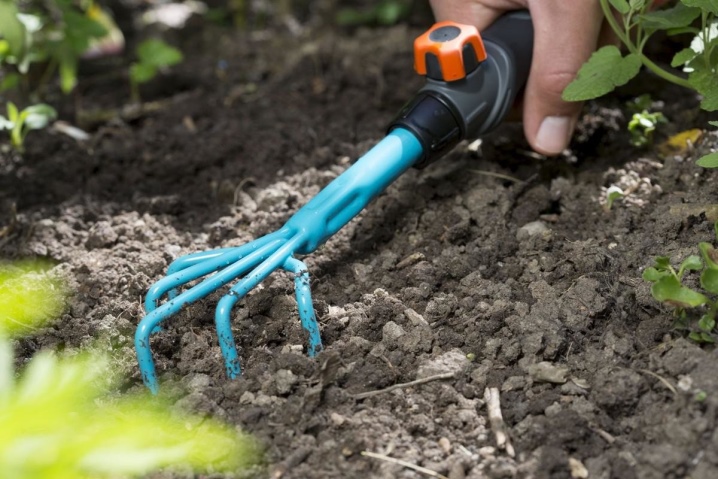
When Columna is planted with top dressing, no nutrients are required throughout the year. Every spring every spring, experienced plant breeders advise to apply a small amount of complex fertilizer. For one square of soil surface, 100 grams is enough. Thuja can look beautiful even without a regular haircut, but it is advised to process it every year in the spring. This sanitary pruning allows you to remove dry branches and those that have been damaged by insects. If the need arises, then a decorative haircut is carried out.
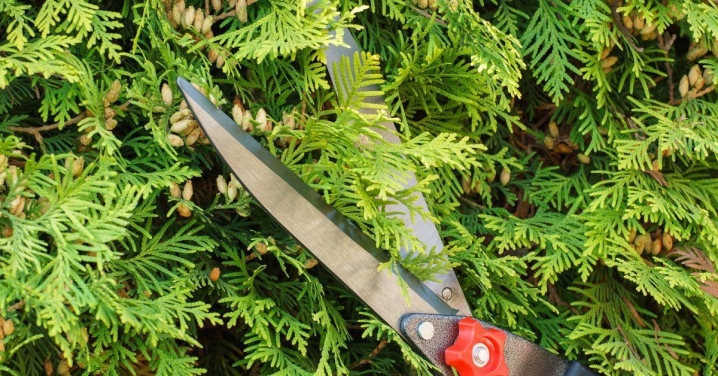
Columna is often used as a hedge-forming plant. In this case, the seedlings in a circle must be cut off by a third of the crown height. After three years from planting, the plant does not need to be covered; before that, it is advisable to protect it from frost. Any synthetic material is suitable for this.
Reproduction methods
Thuja can be propagated in two ways.
- Seeds. This method is very troublesome, takes a lot of time, so only experienced growers use it. This laborious process takes 2 to 5 years. Planting material is obtained from cones, which must be placed in a warm room and wait until they open.At the next stage, the material must be well soaked in water, only after that it is time to immerse each seed in the soil, covered with coniferous sawdust. If you grow a plant in this way, then in the future you will be able to get a resistant plant. The disadvantage of this method is the loss of the decorative qualities of the thuja.
- Vegetatively. Buying a ready-made seedling is more expensive, as well as its further cultivation. The gardener should first of all pay attention to the quality of the root ball, it must be massive, without damage, then the plant will be accepted without problems.

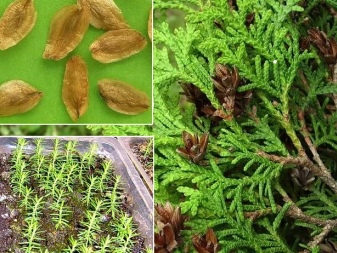
Diseases and pests
The plant is ill infrequently. Of the insects that most often damage it - aphids. The insect looks like a small gray-brown pest that actively attacks the lower part of the thuja. You can recognize an infection by yellowed branches and crumbling needles.
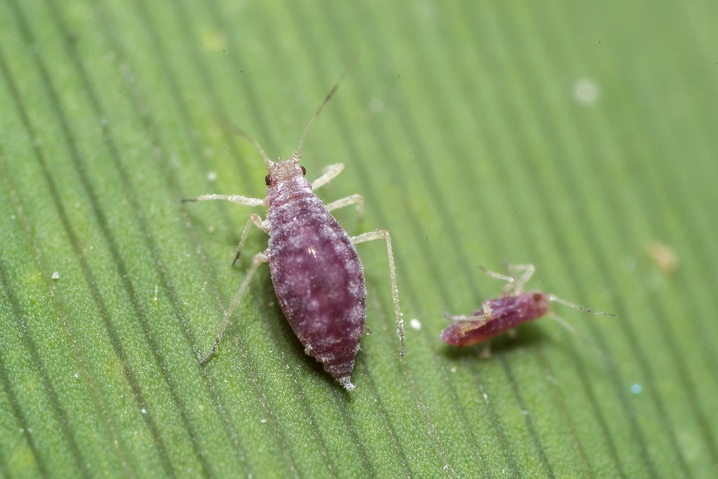
The best medicine will be Karbofos.
Another pest that likes to attack the thuja is the false shield. It is necessary to get rid of it immediately, when the first symptoms appear, since the scabbard can quickly destroy the plant. The best prophylaxis is spraying seedlings and adult plants with Aktellikom in spring. The composition is applied before the buds begin to bloom.
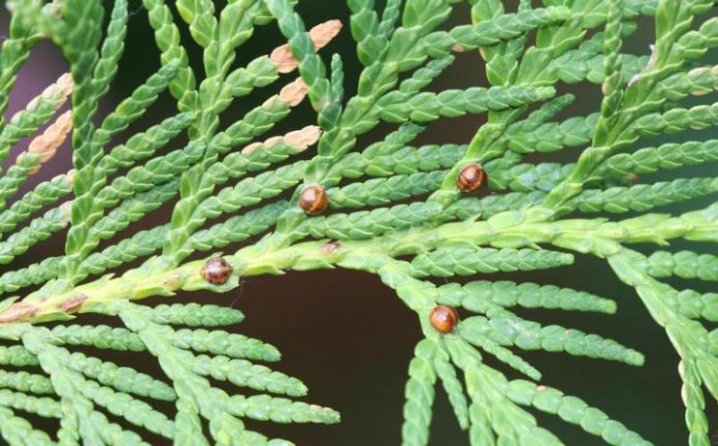
From the diseases that most often affect the tree, rot can be distinguished. It manifests itself first in the form of yellowed branches, which subsequently darken, and then completely die off. Fungal infection can be overcome if you use Fundazol. It is required to spray with the drug once every few weeks until the thuja recovers.
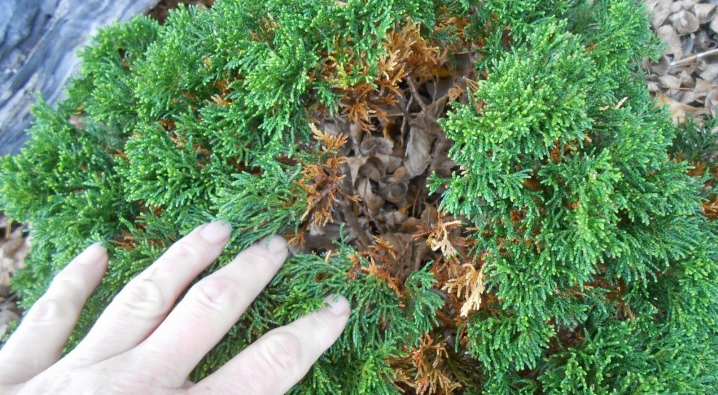
Application in landscape design
A hedge is always very beautiful, the landscape is changing. For its creation, "Columna" is ideal, since it grows as a dense wall, without gaps and voids. Its advantage lies in the fact that thuja can fit into any composition created by a landscape designer. Nearby, you can plant bright flowering shrubs or other conifers. "Columna" will stand out against their background, other greens will only emphasize the juiciness of the color of the needles. A single planting of a thuja looks good on the alley.

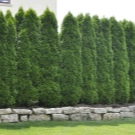

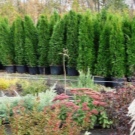
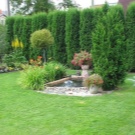
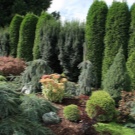
It has an even, elegant shape, so the area that adorns the plant always looks well-groomed.
For more information about the western thuja "Columna", see the video below.



































































The comment was sent successfully.